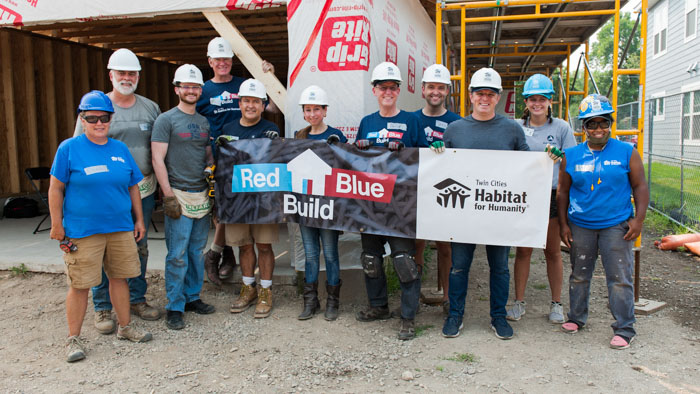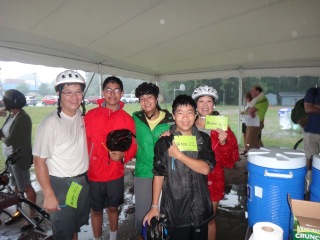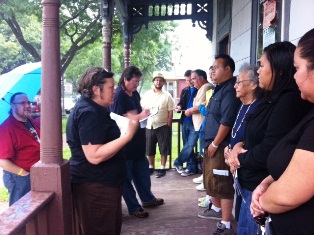State Legislators Hammer Out Differences at Red Blue Build
On August 3, eight state legislators from across the Twin Cities gathered to volunteer with Habitat for the second annual Red Blue Build.
2 min read
Laura Grevas : 9:00 AM on April 30, 2012
On March 21, the Frogtown Neighborhood Association, Twin Cities Habitat for Humanity and Springboard for the Arts convened a small meeting in the basement of the Church of St. Agnes (the church with the big green spire that you can see looming over the neighborhood). About 15 residents and a dozen members of organizations working in the neighborhood were getting together to answer some questions. One of those questions was what to do with the vacant lots and vacant homes dotting the neighborhood.
Frogtown Focus is, as the name would indicate, a tightly focused look at a small part of the Frogtown neighborhood. This summer, we will work with the neighborhood association to look at the blocks between Dale and Western, University and Thomas. This four-by-four block area has been hit hard by foreclosures, and is being rattled by the disruption created by the light rail construction along University. Current residents are worried about what might happen to the vacant lots; some owned by the city, some by banks. Everyone agrees we want community control over development decisions — but what does the community want?
That’s why there are so many meetings. That 16-block area is further divided into four- and six- block chunks. Each of these smaller areas is the focus of two of the 10 Focus initiative meetings. There are six Habitat homes in the neighborhood, and a few more houses being built and rehabbed. Our homeowners are invited as well!
The first of the three ‘focus-wide’ meetings is Tuesday. We will be leading a discussion on ‘Community Development 101,’ so neighbors can understand the decisions developers face. We will also be asking for feedback on a few questions – Should we build first on lots with no community gardens? Should we try to add together irregular small lots to get more regular-sized buildings? Should we focus our effort in the middle of the impacted area, or should we ‘finish off’ blocks where there are only one or two vacant lots or houses?
The answers will determine what we buy and build in the focus area. That’s a big part of the Neighborhood Revitalization Initiative—letting the community make decisions about how we work!
And once these meetings are done, and we know what the community thinks, we’ll turn to making it a reality! The neighborhood might decide that they want some vacant lots turned into pocket parks. They might want small business incubators, or single-family housing. All of these take money and some of them take city action. And to get those things, the community has to be organized and unified. A big task, but like building a house, we plan our work, work our plan, and hammer one nail at a time!
By John Slade, Neighborhood Revitalization Initiative, Twin Cities Habitat for Humanity
Your gift unlocks bright futures! Donate now to create, preserve, and promote affordable homeownership in the Twin Cities.

On August 3, eight state legislators from across the Twin Cities gathered to volunteer with Habitat for the second annual Red Blue Build.

On Saturday, July 21, I awoke to the sound of thunder and heavy rain. Yuck! I would probably have had this reaction on any rainy summer Saturday,...

Twin Cities Habitat for Humanity (TCHFH) began its official Neighborhood Revitalization Initiative work when we were selected to be a part of the...